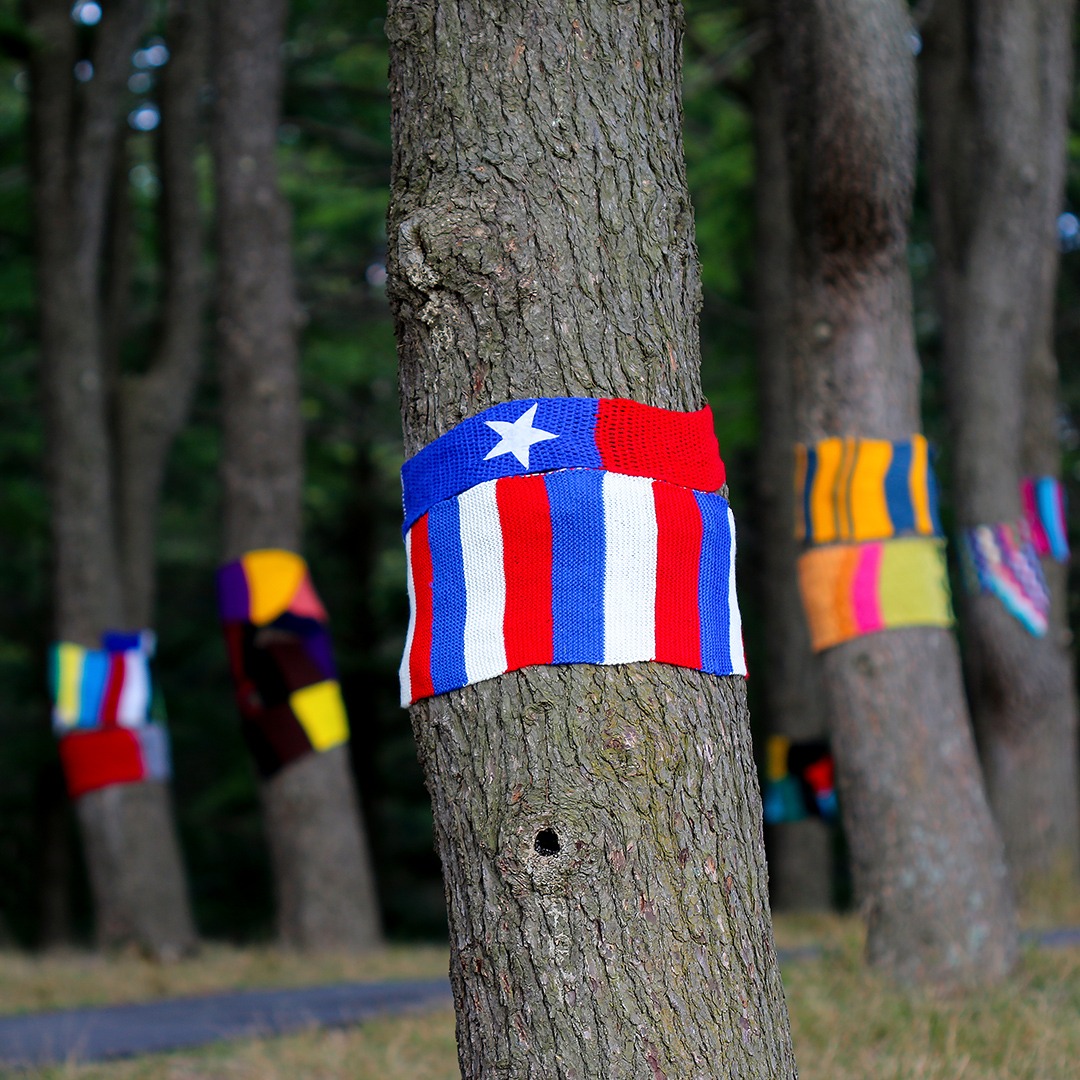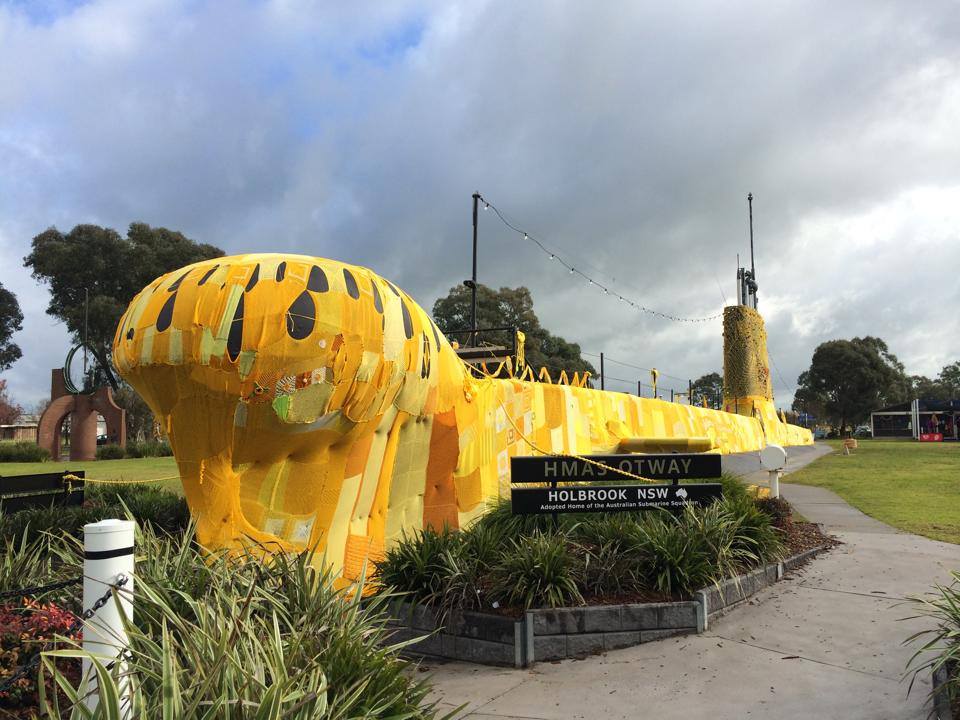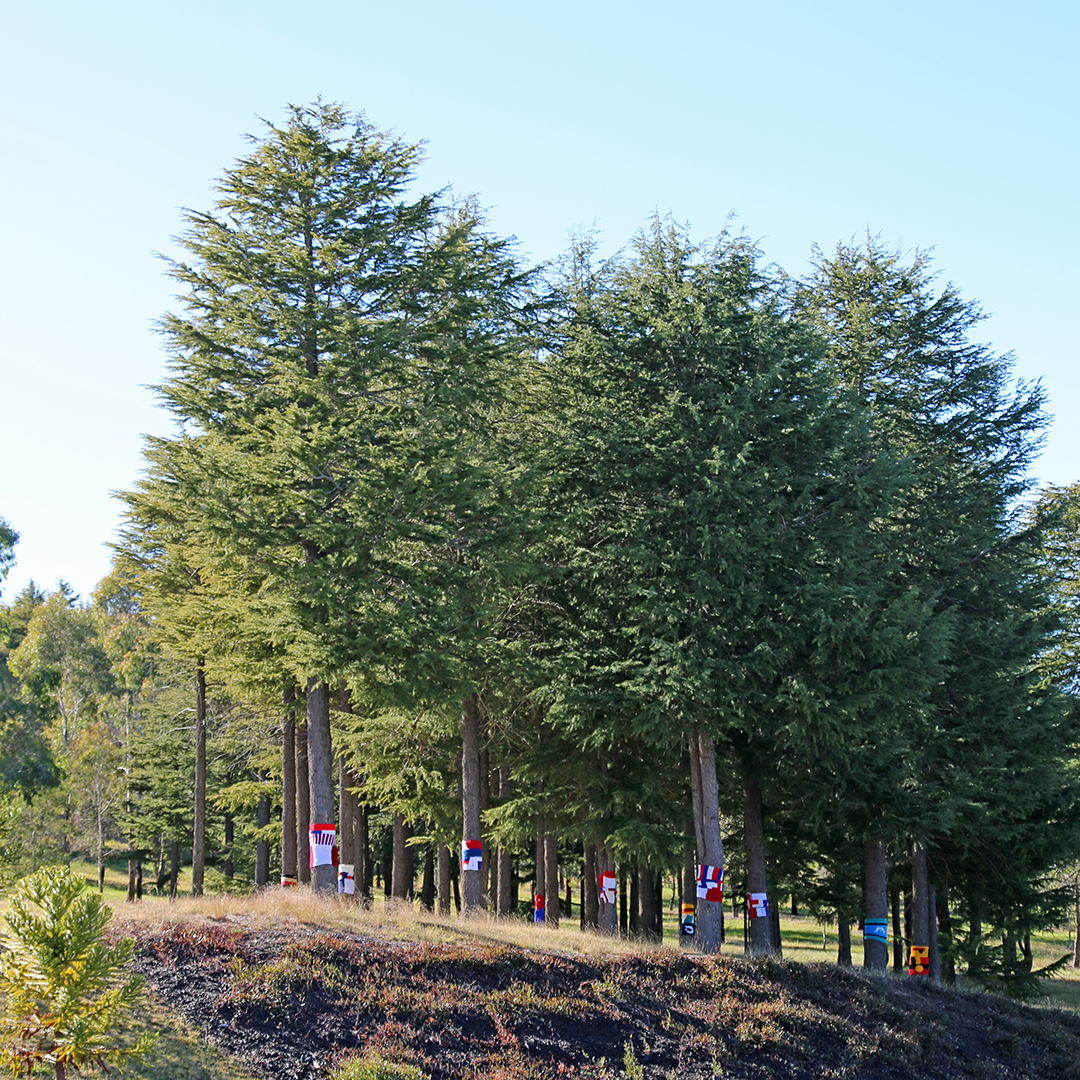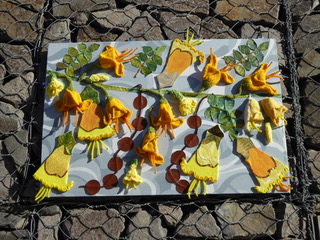
Warm Trees has a Chilean edge this year. Photo: National Arboretum Canberra, Facebook.
It’s become an annual Canberra fixture, but it’s gone above and beyond this year.
Close to 200 trees at the National Arboretum have again been decked out with colourful knitted scarves, but the walkway to the visitors’ centre is busier than ever before with tens of bird and flower decorations pinned along the wall.
‘Warm Trees’ dates back to June 2013, when a group of keen local knitters came up with the idea of wrapping scarves around trees at the National Arboretum to create colourful groves and encourage visitors to the forests despite the biting cold.
But Jan Morgan, a member of the volunteer group ‘Friends of the Arboretum’ that puts on the show, explains it really got underway the following year, when they were inspired by what had happened to the HMAS Otway submarine outside the Holbrook Submarine Museum.
At the instigation of Murray Arts, thousands of craft enthusiasts from across the world worked to “yarn-bomb” the 90-metre long submarine yellow in 2014 for the 50th anniversary of the Beatles’ tour of Australia. Fans will get the reference to the 1966 song, ‘Yellow Submarine’.
Similarly, Jan says the Warm Trees event brings together more than 200 knitters from across Australia, who send in scarfs for Friends of the National Arboretum to drape over the trees.

Holbrook’s ‘Yellow Submarine’. Get it? Photo: Handknitters Guild.
“One theory I’ve read is that it’s like a female, softer attempt at street art and graffiti,” she adds.
“The very first year when the Arboretum opened, we thought it might be a good idea to do it here, really just as a way of encouraging people to come out at a time when maybe they wouldn’t.”
In 2016 they went further and partnered with the Canadian High Commission to knit an enormous maple leaf to display on the hillside near the sugar maple forest. Since then, they’ve held themed Warm Trees for Japan, New Zealand, the Netherlands, Singapore and South Africa.
The event also kicks off during NAIDOC week, so there’s always an Indigenous element to the scarfs too.

The first week of Warm Trees coincides with NAIDOC Week. Photo: National Arboretum Canberra, Facebook.
This year the emphasis is on Chile, wrapping those trees at the Arboretum native to South America with the red, blue and white colours of the Chile national flag.
“I’ve been to Chile four times over the years,” Jan says, “and I realised seven species of trees growing at the Arboretum are actually native to Chile.”
Visitors never have to look hard to spot the Warm Trees, with the forests of Himalayan cedars, grass trees, Camden white gums, silver and Spanish birches decorated with scarfs, as well as the Bonsai and Penjing Collection and Dairy Farmers Hill lookout.
Even many of the crepe myrtles in the main visitor centre car park haven’t escaped.
“We still have the scarves – and more of them each year – but we also do a display along the wall that leads to the visitors’ centre,” Jan explains.
“It’s easy to attach things to it using cable ties, so the year we partnered with Singapore we made orchids out of material and put them along the wall, and then the year we partnered with the Netherlands – a great cycling country – we used old bicycle wheels wrapped with scarves.”
There are seven large panels along the wall this year, one for each of the Chilean tree forests at the Arboretum and decorated with knitted and crocheted versions of Chile’s national icons – the condor as bird, the Red Chilean Bellflower as flower, and the Monkey Puzzle as tree.

A display from along the entrance walkway to the National Arboretum. Photo: Jan Morgan.
“When we were installing them last Thursday, people were so intrigued about what we were doing and … were just so complimentary.”
The scarves are in trees for the entire month of July, after which they’re removed and the largest washed and donated to charity. The smaller scarves and wraps are either repurposed for the following year, or donated to RSPCA ACT for use with rescued animals.
“It isn’t just the trees that are warmed, people are as well,” Jan adds.
A map of where to find the Warm Trees is available on the National Arboretum website.
Original Article published by James Coleman on Riotact.

